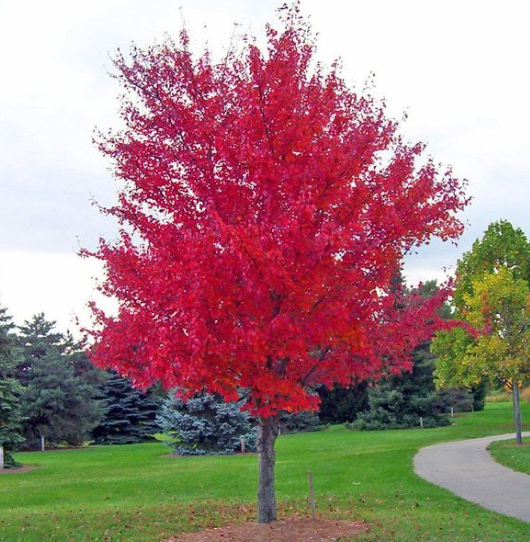Planting a tree can be a big decision. You might end up with a tree that is more work than you expected, or a tree that won’t be able to flourish properly in your area. Here are some things to consider before planting your first tree.
Why Plant a Tree?
We often hear of people planting trees to help fight against climate change. Even planting one tree makes a difference, as trees clean the air that we breathe by filtering pollution.
With these environmental benefits aside, trees are also proven to increase property value. Having even one mature tree on your property can increase its value by 5-15%, even more, if you have some lovely landscaping to go along with it. An aesthetically-pleasing tree can even sell a home by increasing its curb appeal. People are naturally drawn to anything easy on the eyes, so a well-maintained tree could set your property apart from others on the market.
A few well-placed trees can provide shelter and shade all year round This can lead to a reduction in cooling and heating costs for your home.
Spending time around trees is proven to reduce stress and improve your overall mood as well. Even just having a tree to look at out the window has been shown to reduce stress-related hormones. Whether this is because of how beautiful trees can be or the little slice of nature and wildlife a tree can bring is unknown. Either way, lower stress levels leads to a higher-functioning immune system, which in turn leads to better health overall.
What to Consider When Choosing a Tree
There are several things to keep in mind when looking for a tree. Why do you want to plant the tree? Because it’s pretty? For shade? Once these questions are out of the way, you should move on to considering your climate. Some trees will only flourish in very specific environments so it’s important to double-check the tree’s compatibility with your local climate before planting.
The eventual size of the tree can also be a make-or-break decision when it comes to selecting the tree for you. If you’re someone with a smaller yard, you’re not going to want to choose a tree that will eventually outgrow the space.
Trees will either be deciduous or evergreen, meaning they will either lose their leaves in winter or keep them. Evergreen trees tend to be the more popular choice as they are appealing all year round, such as pine trees. If you’re looking for something a little different, a deciduous tree is worth considering.
Tree maintenance can be time-consuming, depending on the type. Are you willing and/or able to clean up loose bark, twigs, or thorns from your tree regularly? Or would you prefer a tree that requires less work to keep happy and healthy? There are beautiful options either way.
What Trees are Native to Maryland?
Native trees attract native wildlife which can help rebalance your local ecosystem. A balanced ecosystem leads to healthier and better-looking trees and other plant life.
Some popular trees native to Maryland are as follows:
- Sweetbay Magnolia – a semi-evergreen beauty with creamy-white flowers, popular with native wildlife
- Red Maple – popular due to its red and green foliage
- Oaks – variants such as the white oak and chestnut oak are commonly occurring in Maryland
- Pines – evergreens with needle-like foliage, slightly higher maintenance
- Northern White Cedar – very tall, perfect for wildlife with very dense foliage
The Best Trees For Your Maryland Lawn
There are many trees to choose from that are suitable to plant in Maryland depending on your various needs. The climate and conditions in Maryland vary, so highly adaptable trees are ideal.
Some great options include the Leyland Cypress, an evergreen with dense foliage, perfect for planting several in a row to grant some privacy from neighbors. The Tulip Poplar is more commonly found in forest areas but can make a fantastic yard tree with a little TLC and produces beautiful flowers. For something that requires less maintenance, the American Linden (or Basswood tree, as it’s more commonly known) may be a perfect fit for you and your yard.
Due to the changeable climate in Maryland, it is recommended that you choose a tree best suited for your area. Important things to take note of are whether it tends to be more humid than dry, whether the soil retains moisture well, and what other types of wildlife are already in the area.
When you are ready to go out and buy your first tree, a little bit of research goes a long way. In the end, you know what you want from a tree, whether it be plenty of shade or just something pretty to look at. With a little bit of time and patience, you can transform your yard in no time with the addition of a beautiful, complimentary tree.
Now that you’ve picked out the perfect tree for you, how do you take care of it? Find out in my next post, A Complete Guide to Tree Care.
Do you need stump grinding services in your yard? We can help!
